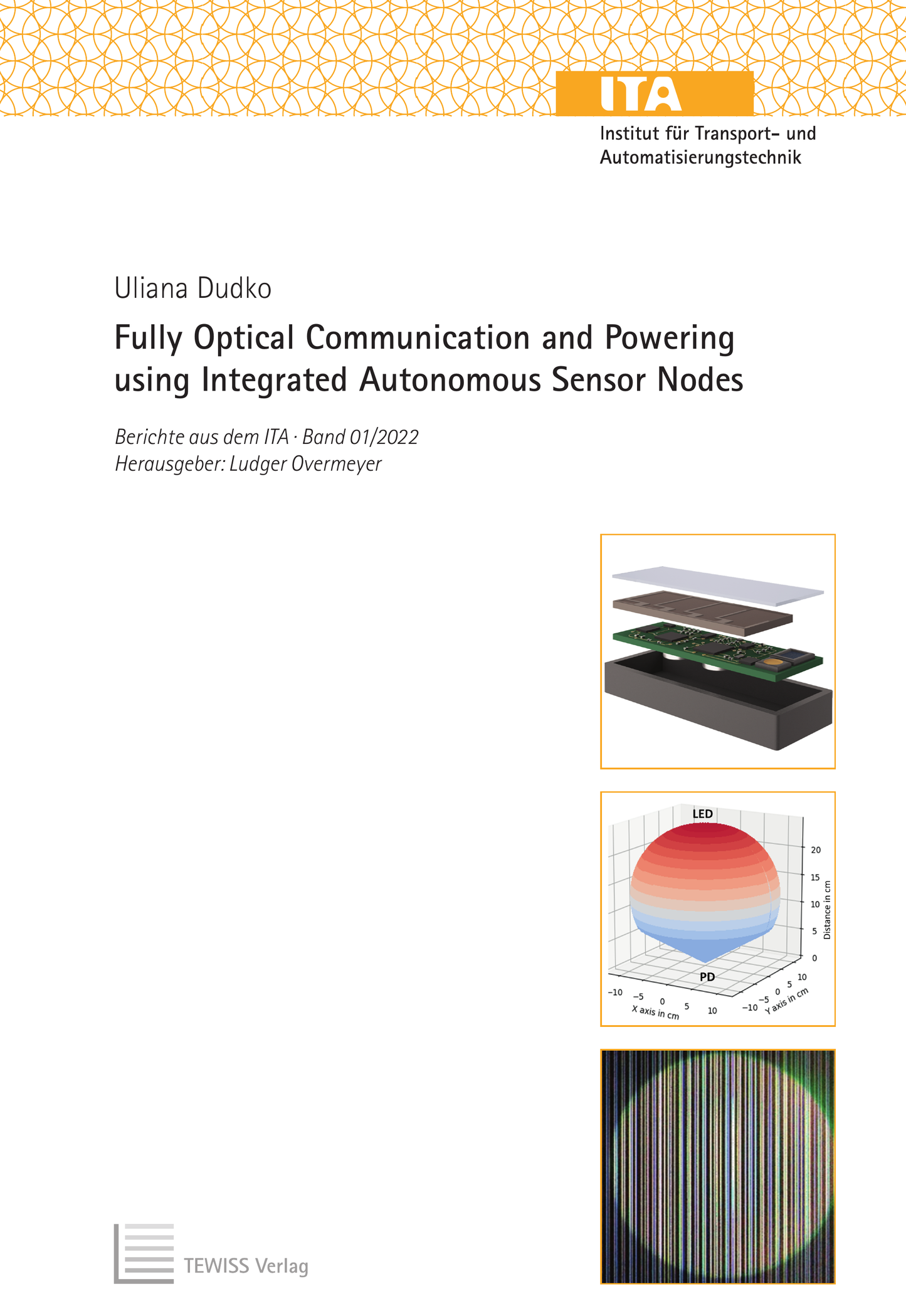Fully Optical Communication and Powering using Integrated Autonomous Sensor Nodes
Autor: Uliana Dudko
ISBN: 978-3-95900-656-9
Dissertation, Leibniz Universität Hannover, 2022
Herausgeber der Reihe: Ludger Overmeyer
Band-Nr.: ITA 01/2022
Umfang: 180 Seiten, 78 Abbildungen
Schlagworte: wireless sensor networks, visible light communication, energy harvesting, solar cell, optical wake-up, autonomous sensor nodes
Kurzfassung: Wireless sensor networks are key instruments in a wide range of scientific and industrial processes, such as environmental sensing, structural health, and equipment condition monitoring. In conventional wireless communication technology, the gradual saturation of the radio-frequency (RF) spectrum drives the need for alternative technologies to support a high density of users. An alternative to conventional RF technology is visible light communication, which offers license-free data transmission with bandwidth up to the terahertz range and can be applied in environments where an RF signal is distorted or prohibited.
To provide wireless sensor networks with power autonomy, energy can be harvested from ambient light using solar cells. The main scientific challenge of this work is combining both technologies and finding an energy balance between high-power requirements of optical data transfer and scarce power generated by a solar cell. In this work the design of an optical autonomous sensor node that combines fully optical communication and solar powering in one miniaturized device is comprehensively discussed. The proposed device is capable of not only node-to-node interaction but also communication with a smartphone as an end terminal. The resulting dimensions of the node are 42 mm x 14 mm x 15 mm.


